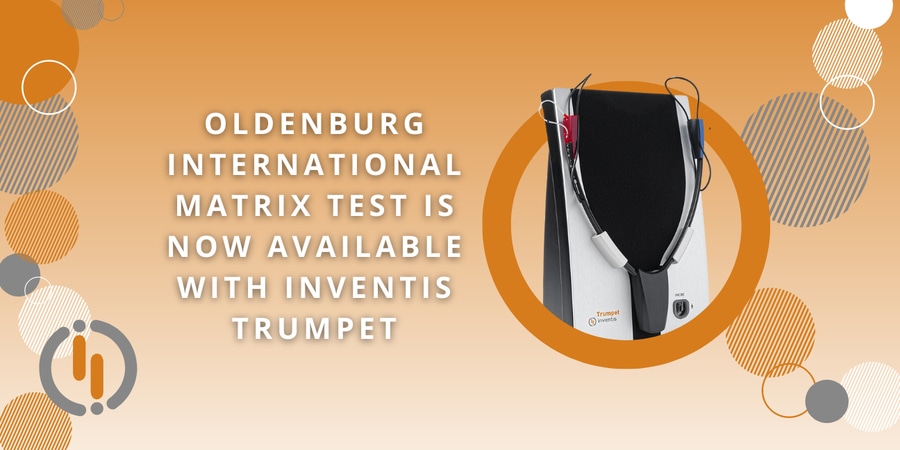
#Industry News
Oldenburg International MATRIX TEST
Now available with Inventis TRUMPET!
Speech communication plays a vital role in human auditory function, making speech audiometry in noise an essential component of diagnosing and rehabilitating hearing loss.
The objective of the Matrix Test is to determine the signal/noise ratio (SNR) at which the patient can comprehend 50% of words, known as the Speech Recognition Threshold (SRT). This procedure is designed to be guided, automatic, simple, and repeatable.
Now, the Oldenburg International Matrix Test is available with the Inventis Trumpet! Simply connect your Trumpet AUD to your computer, select the patient from the Maestro database or Noah, and initiate the Matrix Test.
During the test, the patient is asked to repeat sentences consisting of five random words presented in the presence of background noise. The sentences are generated from a matrix containing various subjects, verbs, numerical adjectives, object complements, and qualifying adjectives. With this approach, up to 100,000 different sentences can be generated, preventing memorization.
The examiner marks on the screen which words the patient correctly identifies, and the software automatically adjusts the SNR for the subsequent sentence. Consequently, the examiner doesn't need to speak or understand the patient's native language to score the test.
The complete examination consists of 20 sentences and can be conducted using supraural headphones (TDH 39, DD45), insertion headphones (ER-3C), Trumpet's integrated speaker, or up to three external (passive) speakers connected to the Trumpet (two at a time).
Upon completion of the exam, the hearing care professional will possess definitive data: the precise value of the patient's SRT. While the SRT is an objective measurement, it is not always easy to obtain with a standard speech test.
If the SRT is +5, it indicates that the patient comprehends approximately 50% of words when the stimulus is 5 dB louder than the background noise. Conversely, an SRT of -2 suggests that the patient understands 50% of words when the stimulus is 2 dB lower than the noise. A lower SRT value signifies better speech recognition in noise.
Based on the SRT value, the clinician can more easily determine the most suitable hearing aid for rehabilitation purposes.
The Matrix Test is currently a popular adaptive speech test, particularly for evaluating the effectiveness of hearing aids and cochlear implants. Its availability in more than twenty different languages allows for international result comparisons, establishing it as a standard in audiological prosthetic evaluations.






